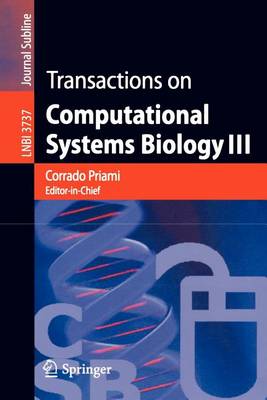Lecture Notes in Computer Science
1 primary work
Book 3737
Transactions on Computational Systems Biology III
Published 1 January 2005
In the last few decades, advances in molecular biology and in the research - frastructure in this ?eld has given rise to the "omics" revolution in molecular biology,alongwiththeexplosionofdatabases:fromgenomicstotranscriptomics, proteomics, interactomics,and metabolomics. However,the huge amount of b- logicalinformationavailablehasleftabottleneckindataprocessing:information over?ow has called for innovative techniques for their visualization, modelling, interpretationandanalysis.The manyresultsfromthe ?eldsofcomputerscience andengineeringhavethenmetwithbiology,leadingto new,emergingdisciplines such as bioinformatics and systems biology. So, for instance, as the result of - plicationoftechniquessuchasmachinelearning,self-organizingmaps,statistical algorithms,clusteringalgorithmsandmulti-agentsystemstomodernbiology,we can actually model and simulate some functions of the cell (e.g., protein inter- tion, gene expression and gene regulation), make inferences from the molecular biology database, make connections among biological data, and derive useful predictions. Today, and more generally, two di?erent scenarios characterize the po- genomic era.
On the one hand, the huge amount of datasets made available by biological research all over the world mandates for suitable techniques, tools and methods meant at modelling biological processes and analyzing biological sequences. On the other hand, biological systems work as the sources of a wide range of new computational models and paradigms, which are now ready to be applied in the context of computer-based systems.
On the one hand, the huge amount of datasets made available by biological research all over the world mandates for suitable techniques, tools and methods meant at modelling biological processes and analyzing biological sequences. On the other hand, biological systems work as the sources of a wide range of new computational models and paradigms, which are now ready to be applied in the context of computer-based systems.
